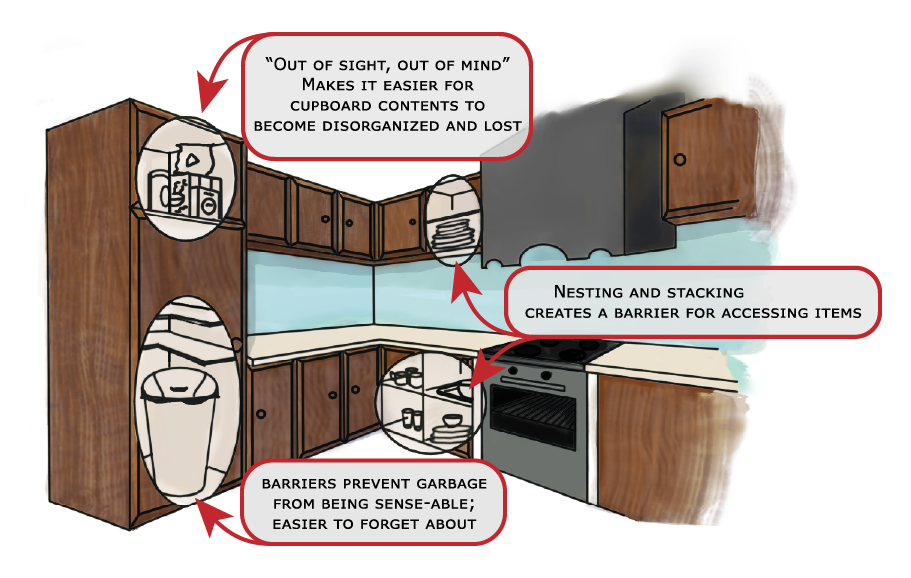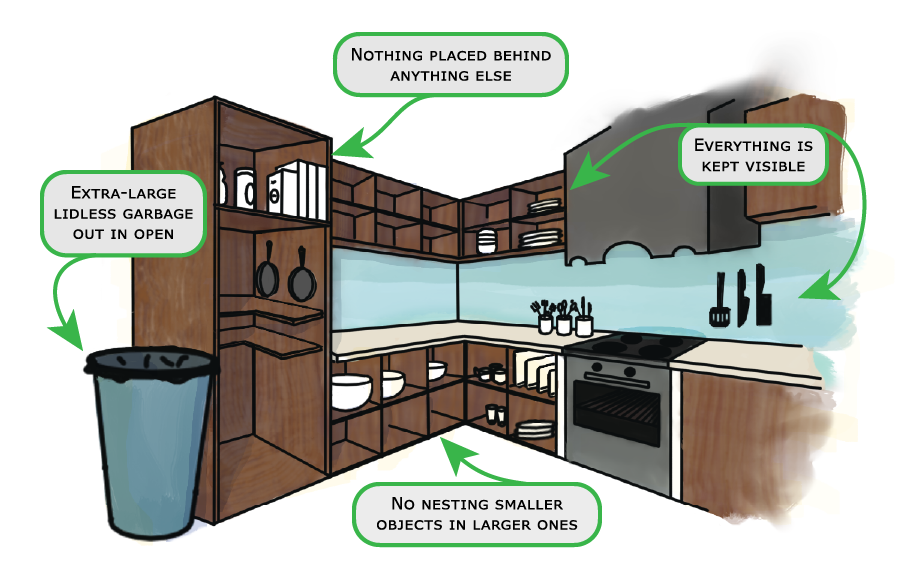Wherever and whenever possible, assess and remove all unnecessary steps.
What is a step? Let’s look at the first few steps of making a sandwich.
- Realize you’re hungry
- Go to kitchen
- Open cabinet
- Look for and retrieve clean plate (if available)
- Close cabinet
To the ADHDer this is a very real example of the thought process that goes into what most people perceive as the ‘first step’ to making a sandwich: retrieving a plate. Each perceived granular step is assessed in that moment to be deemed as necessary or unnecessary. Ever wonder why the cabinet doors are always left open? The ADHD brain (the brain, not necessarily the individual) has filtered it out as an unnecessary step. With any process you must first ask, “what is the goal,” “is the goal reasonable,” and “is this step really necessary for the goal?”
Setting Up for Success:
Because ADHD is an executive function disorder, it is critically important for the goal to be immediately detectable by an external sense (sight, sound, smell, touch, etc.)
Having clean dishes available and put away is an example of a reasonable goal. Having those clean dishes stored away from these senses (hidden out of sight in a cabinet) is not. The steps of opening and closing cabinet doors are not necessary for the goal of having clean dishes available and put away – and in fact, they even impede the ADHD brain’s ability to maintain such a system! If left unaltered, a common solution devised by the ADHD brain is to default to storing dirty dishes in the sink or around the house where they can be seen at all times.
In this case, to set ADHDers up for success with managing dishes, dishes should ideally be stored where they can be assessed and then grabbed with a glance.
For some kitchens, this might look like removing cabinet doors or setting up additional open shelves. Other kitchens may be better suited towards storing dishes in a drying rack on the counter or over the sink. When assessing situations that need adjustments, it’s always best to consult with the best resource available: the ADHDer! Through discussion and compromise, most household systems can be adjusted towards success.
Want to see a comparison between a traditional kitchen setup and one designed for ADHD accessibility?


__
Want to learn more about setting up ADHD-friendly organization systems? Head over to OpenPathEducation.com and check out the ADHD: Setting Up for Success class, offered as part of the Parent Empowerment Project.
